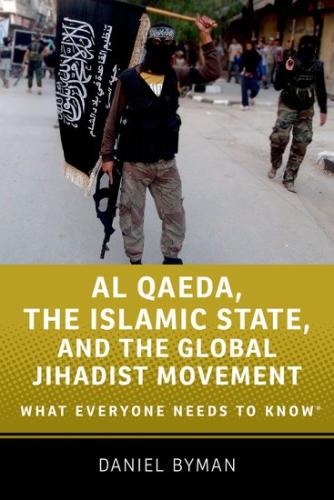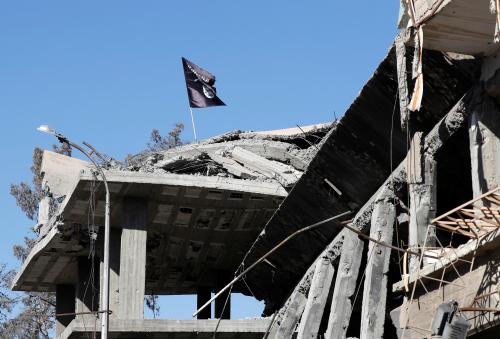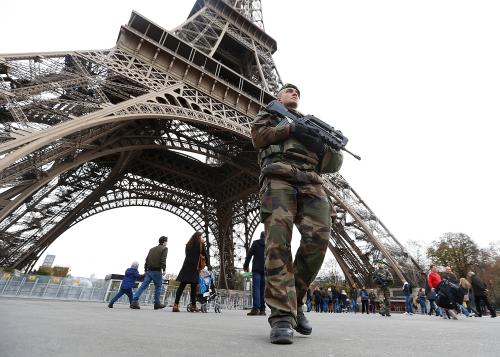Western foreign fighters like John Walker Lindh are often more trouble than they’re worth for their jihadi comrades, argues Dan Byman. This piece originally appeared in Slate Magazine on May 24.
The release of John Walker Lindh, the “American Taliban,” from prison after 17 years has raised concerns that he will return to terrorism, sparked anger at what some see as the early release of a traitor, and generated reflections on the seemingly endless war in Afghanistan. Lost in the discussion, however, is an important yet often-missed issue: Foreign fighters like Lindh often bring little value to the jihadi groups they join.
After his capture in Afghanistan in 2001, Lindh proved an early ripple in what became a foreign fighter wave. Subsequent wars in Iraq and Somalia drew more foreign recruits from the United States and Europe, while the process went on steroids when the Syrian civil war broke out in 2011 and over 40,000 foreigners traveled there to fight. Of these, almost 6,000 were from Europe, compared with around 700 between 1990 and 2010 for jihads like Afghanistan, Bosnia, Chechnya, and Iraq combined. The number of American figures is far smaller—a study from George Washington University’s Program on Extremism found that by 2018 fewer than 100 Americans had successfully traveled to Syria to fight—but even that figure is large compared with previous jihads.
On the surface, Western foreign fighters would seem desirable for jihadi groups. Those who leave their homes to travel to a faraway war zone are likely to be particularly committed to the cause and willing to do anything to help the group. Terrorism expert Mohammad Hafez found that foreigners represented a disproportionate share of suicide bombers attacking U.S. forces in Iraq. In addition, foreign fighters lack local ties. As such, they are not concerned about retaliation against their own families and communities and are often involved in the worst atrocities both because of their zealotry and because groups like the Islamic State use them to repress and intimidate local communities.
Finally, foreigners are valuable if the group wants to conduct terrorism in their home countries. They have passports, know the language, can form and work with local radical groups, and in general have a comfort and familiarity with the West that a non-Western operative would lack. According to terrorism scholar Thomas Hegghammer, the presence of a veteran of a foreign jihad increases both the success rate and the lethality of a terrorist attack in a western country. Finally, the foreigners also validate the group they join. Al-Qaida and the Islamic State group boasted that they were leaders of the global Muslim community, and the presence of Muslims from around the world helped substantiate that grandiose claim.
Yet for all these benefits, foreign fighters—especially the Western ones—come with many drawbacks. Their zealotry does not make up for their lack of military training or experience. At times, as in Afghanistan before 9/11, when Lindh joined the Taliban, groups had a range of training camps to correct for this problem, but this is extensive infrastructure is largely a thing of the past. In most war zones training is hurried, with combat itself leading to a survival-of-the-fittest winnowing.
Foreign fighter mortality rates are high, often well over 20 percent. The class of recruits that included Omar Hammami, an early American volunteer for Somalia’s al-Shabab, is suggestive. In his autobiography, Hammami noted that out of the five volunteers for one of his groups, one was captured and three were killed (Hammami, the fifth, would also later be killed). The foreigners’ zealotry in combat and eagerness for martyrdom is one reason for the high casualty count, but their foreign looks and ways also made them more likely to be arrested or killed.
Not surprisingly, the foreigners are easily disillusioned. Hammami recalled he had to dismiss his initial fantasies about divine intervention, inspired by the works of jihadi propagandists: “I had to come to terms with the fact that the angels don’t come down and save the day for every battle.” Recruits also chafed at the boredom and tedium common to soldiers in any war. When asked to stand down when the al-Shabab sought a break in the fighting, Hammami and others considered trying to find another place to fight. One of his fellow jihadis quipped, “The true blessing is not make it to Jihaad … the true blessing is staying in Jihaad.”
The foreigners also cause problems for the jihadi groups themselves because their extreme views (and often superficial knowledge of Islam) alienate locals. At times, this would take the form of lecturing locals on proper behavior, but it might also result in beatings and even killing for supposed infractions. An al-Qaida in Iraq after action report blamed foreigners for their “disdain for differences in opinions, arguments and exposing faults.” Even when they are better behaved, their very presence conflicts with the nationalism and anti-foreign sentiment that often motivates local fighters.
The foreign presence also shapes the war in ways that hinder jihadi groups’ ultimate success. Foreign fighters often reject borders within Muslim lands as colonial creations meant to divide the faithful, and they have transnational connections and networks that brought them to the war zone. Foreign fighters often spark or legitimate war against the jihadi group. In Chechnya, where locals enjoyed hard-won autonomy from Russia after a bitter war that ended in 1996, foreigners played an instrumental role in shattering this peace and expanding the fight into the neighboring Russian region of Dagestan in 1999. A hitherto little-known politician named Vladimir Putin seized on the Dagestan attack to renew the war in Chechnya and used the presence of foreigners among Chechen fighters to justify a harsh Russian response that eventually put Chechnya back under Moscow’s thumb. Bashir al-Assad would similarly exploit the presence of foreign jihadis on Syrian soil to paint the opposition as a terrorist group and himself as a defender of civilization.
Even when it comes to terrorism in the West, those who travel to foreign battlefields and then return, are often less effective than commonly realized. In the pre-9/11 era, most governments paid little attention to foreign fighters, and they could go to Afghanistan or other countries to train and fight with little interference. After 9/11, however, governments focused far more on this danger, and foreign fighters were far more likely to be arrested on their return. Their transit, activities in the war zone, and social media presence made them more detectable than those who simply stayed home to do attacks. In the United States, no foreign fighter has successfully committed a terrorist attack since 9/11—a remarkable success story.
Some jihadi groups are now placing limits on the role of foreigners. Al-Qaida in the Arabian Peninsula, one of the group’s most successful affiliates, is careful not to deploy foreigners to sensitive areas where they might alienate locals. Many groups, however, are still desperate for manpower, and their self-image makes them reluctant to reject Western Muslims who claim to follow their credo.
Foreign fighters like Lindh are thus a mixed blessing. Although they help terrorist groups fight their wars, they also gain those groups new enemies and cause problems with the locals, both of which make long-term jihadi success less likely. For the United States and allied governments, vigilance is necessary to prevent the foreign fighters from becoming a dangerous terrorism risk, but local allies are often eager to cooperate with the Western governments against these dangerous imports for their own reasons.
The Brookings Institution is committed to quality, independence, and impact.
We are supported by a diverse array of funders. In line with our values and policies, each Brookings publication represents the sole views of its author(s).










Commentary
Foreign fighters are dangerous—for the groups they join
May 29, 2019